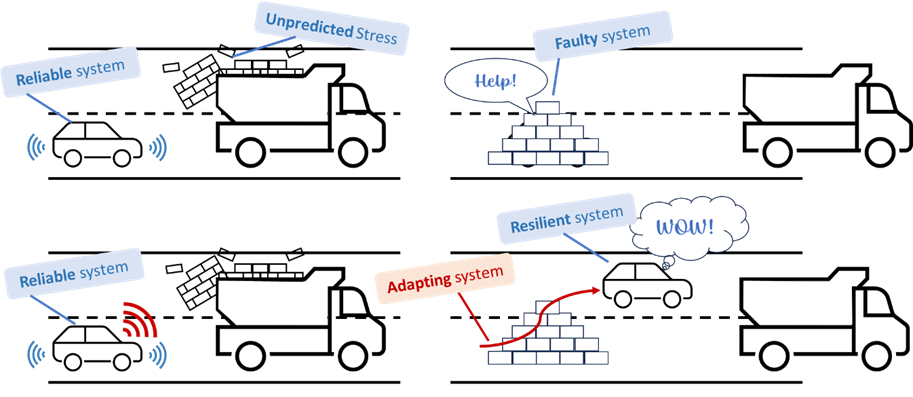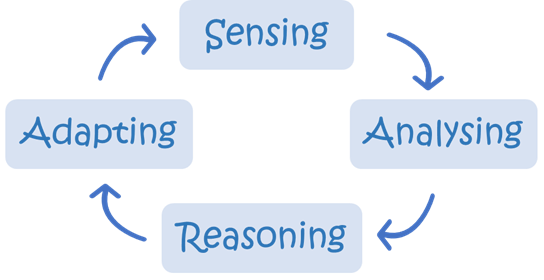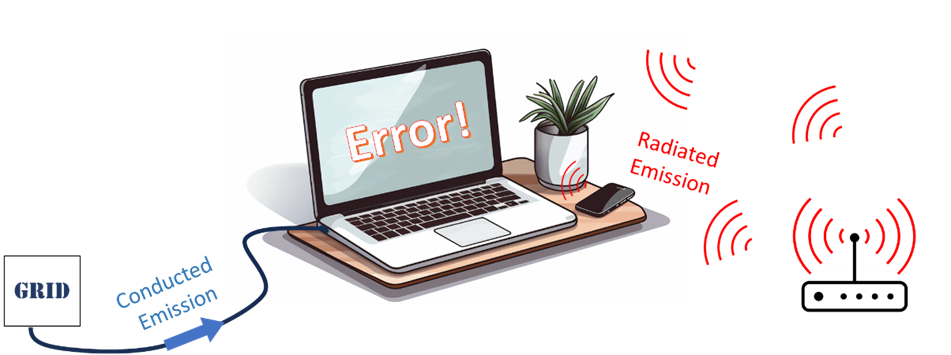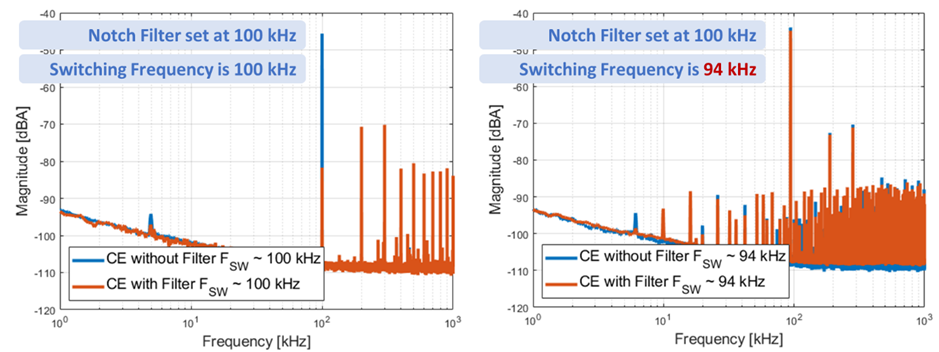ESR04 – Ivan Struzhko – Adaptivity Is the New Black
Hello, dear readers! In this second blog, I’m aiming to present the introduction to my research topic, which could be described via a short title, “Cognitive techniques in EMC application”. Although you did get there somehow on this blog, you may not be aware of what “Cognitive techniques” or “EMC” are. My goal is that after reading this text, you will be able to gloss over your new terms with your non-electrical engineer friends.
Reliability – Resilience – Adaptivity
I will start from the basic idea of every system (electrical, mechanical or even social) – its Reliability. This is a term you should be familiar with. When we design any system (cell phone, car, or space station), we want it to work reliably without any interruptions or interference.
However, we all realise that any system is subject to external and internal stresses in the real world. For example, the quality of telephone communications and analogue broadcasting deteriorates during a lightning storm, and a reliable operating system (Windows or macOS) can be corrupted by harmful computer viruses. The property of the system to withstand or recover quickly from external and/or internal stresses is called Resilience. It is one of the main abilities of the reliable system. Back to the example: a resilient operating system has a strong firewall, and a backup can recover lost data. But one must always remember: there are no measures that will protect against everything in the world.
Thus for example, the Tesla is also a pretty resilient car until a brick hits its window, as in this video:



(https://www.youtube.com/watch?v=HOZNnSCmHoU)
Obviously, it is a very extreme case, and I watched a lot of Tesla’s test drives; it has a lot of sensors that make the car very safe for the driver, passengers and pedestrians. But I want to highlight that although a bunch of safety methods were implemented, they didn’t protect it from such a really unexpected case. Yes, of course, such systems are already widely implemented in cars, so, at dusk, automatically turns on the dipped beam headlights, and when it rains, the windshield wipers begin to work. What if the car had another special sensor, let's call it "Bricks falling on the windshield sensor"? Then, the car, having detected this unexpected stress, would be able to act to avoid negative consequences (turn or stop). Everything I have just described can be included in the concept of Adaptability.

ChatGPT describes the concept of system adaptivity as “The ability of a system to adjust itself or its behavior in response to changes in its environment or requirements. It involves the system's capacity to learn, evolve, and optimize its performance based on feedback or new information.”
During the day the Sun goes from east to west. And sunflowers all over the world follow the sun to get more sunshine that is needed for growing. Sunflower changes its own characteristics and adapts to the best condition.
By the way, fun fact: Sunflower in Turkish is Ayçiçeği, where "Ay" means moon, and "çiçek" means flower, so it translates to "moonflower," possibly referring to the flower's behaviour even when the sun is not visible. (Thanks to Rıdvan Aba (ESR in ETERNITY) and ChatGPT).
And that brings me to the end of this section. We have come from the concept of Reliability to Adaptivity through Resilience.
Cognitive systems
Now, let's take a huge leap to the Electrical Engineering side and talk about the Cognitive Radio Concept. Yes, I realise that it is quite a long jump, and it is easy to get lost along the way, but I will try to make it easy. Therefore, the following example will be simplified as much as possible, and I may make some omissions.
I think most of you have a Wi-Fi router. And a bunch of devices at home that are connected to it: cell phones, laptops, TVs, and even the refrigerator and vacuum cleaner. All of them are in constant communication with the router. And your neighbours also have routers and a ton of devices working at the same time. Given that all routers operate in the same frequency range, they can easily interfere with each other. And even within your ecosystem, different devices can have trouble receiving/transmitting information. To prevent this from happening, the frequency range of routers is divided into channels - narrower frequency ranges - and in an ideal world, each router in your building would work on its own channel without interfering with your neighbours. To make your life easier, the router mode selection should be automatic. That's where the Cognitive Radio Concept comes in. Your router constantly measures the environment, looks for the most unloaded communication channel, and forwards the information through it. This can be compared to a driver who changes lanes if there is a traffic jam in his lane.
The Cognitive Radio Concept is now widely used in radio and TV communications. The IEEE Std 1900.5-2011 standard defines cognitive radios as a type of radio in which the device is aware of the radio’s environment (which can include location, time, or other operational parameters related to communication systems) and internal state and can make decisions about the radio operating behaviour based on that information and predefined objectives. Thus, you can see a direct connection with the router example.
The main components of the CR concept are the Spectrum sensor system, Signal processing system, Decision-maker system and Adjusting system. The sensor part is supposed to be a spectrum analyser (SA) for environment scanning. In the origin CR’s idea SA has to scan the radio environment, signal processing software defines the “white spaces” in the interested channel, the decision-maker system checks the possibility of changing the channel, and then the adjusting tool tunes the transmission/receiver parameters to use the defined free channel.

Cognitive Radio Concept principal circle
My main focus of the research is to implement the concept of CR for the EMC application, and for this purpose it is necessary to look at underlying concepts and analyse them, in some cases, analogies can be very distant at first glance.
But first, let's understand what exactly is an EMC?
The Great Electromagnetic Compatibility
Of course, I do not claim that I can fully and comprehensively describe this concept for you, we do not have enough for a whole lecture for this and I am not the best speaker for this.
But I'll give you a couple of examples that will help expose the problems that EMC has to solve. Prof. Frank Leferink usually use them for introduction to EMC, and I think it is an excellent way to present it.

https://www.youtube.com/watch?v=vjPsaYMk83Y

https://www.youtube.com/watch?v=lJ7F2kWLGuE
Thanks to the brilliant actor Rowan Atkinson for his wonderful roles and great examples for us trying to explain what EMC is all about.
What do we see in these snippets of the movies? In the first one, Mr. Bean helps a boy fix the remote control of a radio-controlled boat and adjusts the remote so that its electromagnetic waves can now also control the poor woman's wheelchair. In the second, the famous spy John English uses his phone near a military submarine; its communications systems have interpreted a cell phone signal as a missile launch signal, which caused the launch of a missile of the “water – bad guy's boat" class.
Of course, these are all very exaggerated examples, which, however, show that electromagnetic interference (EMI) can lead to very negative consequences! And Electromagnetic Compatibility is about preventing the EMI.
And for dessert, every one of us (those over 30 for sure 😊) has heard a strange grinding noise in the computer speakers within seconds of the cell phone ringing: https://www.youtube.com/watch?v=FYjs7vsaSEw
So what is the Electromagnetic Compatibility (EMC)? In simpler terms, EMC is concerned with ensuring that different electronic devices can coexist and function appropriately without adversely affecting each other. If you want to see a more detailed definition, EMC is the ability of electronic and electrical systems or devices to operate in their intended electromagnetic environment without causing or suffering from interference.
In the field of Electromagnetic Compatibility, the conducted and radiated emissions are considered as the primary stresses.

Now, there are a lot of methods to suppress the emission, like shielding, filtering, time-, frequency- or spatial- diversity. Applying these techniques can be considered as making the system resilient to EMI to which they are designed until the disturbances are within the ranges for which the protective actions are designed.
The protective tool loses all sense when stress goes beyond the intended boundaries. Let's consider it in the example of the notch filter operation.
Passive filters are a well-known and widely used method for conducting emission suppression. In particular cases (when the unwanted noise is present only at a single frequency), using the notch filters is preferable as the weight and volume of such a filter can be reduced by several times compared to a conventional low-pass filter.

The schematic of the passive Notch Filter and its performance.
But the main is directly associated with its main disadvantage. It can be used under specific conditions, the expected interference at a certain frequency must be determined, and the filter is adapted to these conditions in the design. First, during the operation of the filter, its state may change. The components, primarily capacitors, tend to degrade due to ageing. For example, capacitors have the property of decreasing their capacitance while increasing their equivalent series resistance, which significantly reduces filter performance. I presented it in my paper for GEMCCon 23, and EMC-SIPI 23 conferences. And second, the filter performance is highly dependent on the impedances on its side. It is noteworthy that noise source and load could be time-variant. In this case, the conducted emission spectrum will change with time. The period of these changes can vary from microseconds to seconds.
So, you can see in the figure below that a notch filter tuned to 100 kHz reduces interference by 35 dBA at the same frequency. However, if the interference frequency is changed by only 6%, the filter loses its performance completely.

The notch filter tuned to 100 kHz reduces interference by 35 dBA at 100 kHz, but lost in performance at 94 kHz.
Using this example, it is possible to say that if this filter could change its parameters and adjust to changing external and internal conditions, i.e. would have the property of adaptivity, then the system in which it is installed would be much more resilient and reliable. Here, we have closed the circle by returning to those concepts!
Conclusion
That concludes this blog so as not to spoil my future publications. However, it will be updated as my papers on this research are published, so if you are interested in this research topic, add my blog to your bookmarks and follow my updates on LinkedIn and ResearchGate.
I would like to hear from you if you have any questions or suggestions!


